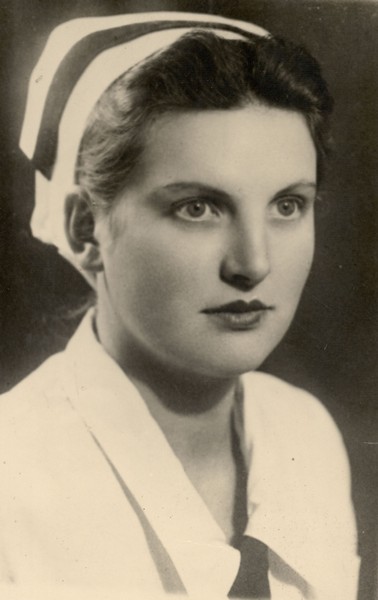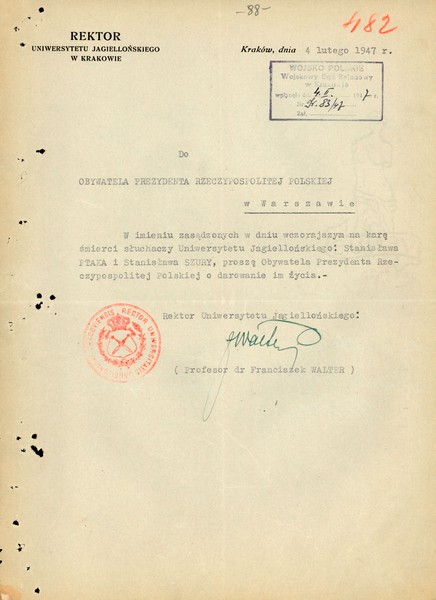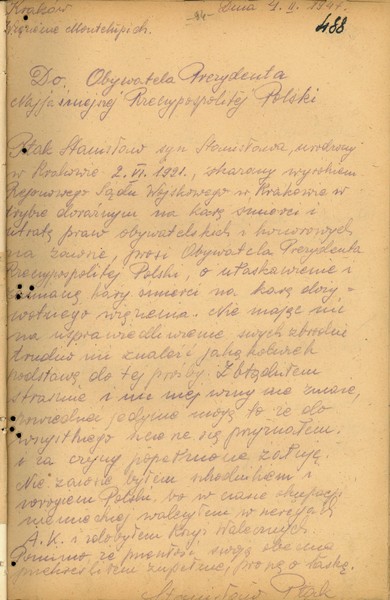Stanisław Ptak

The "Save the Memory" project is a series of video interviews with witnesses of history from 1939-
1956. It was created to preserve the memories and experiences of the heroes and heroines from this
period.
At the beginning of the film. the logos of the Polish History Museum are illustrated, featuring a yellow crown, gray wings, and the letter "P" in red with the Polish flag in the center. Also detailed is the phrase ”Patriotism of Tomorrow” with the letter "P" in black. Underneath these icons, there is a white inscription "Project co-financed by the Museum of Polish History in Warsaw as part of the Patriotism of Tomorrow program."
The main character of the film is Stanislaw Ptak. He was born in 1921 and died in 1994. He was a
soldier of the Home Army, an activist of the League for the Fight against Bolshevism, and a political prisoner of the communist regime from 1946-1956. His story is told by his daughter, Anna Ptak. The background is a room, and behind her are shelves of books and a brown closet. The woman is middle-aged, framed to her shoulders. She has gray hair down to her chin, combed to the side, and light makeup. She is dressed in a colorful checkered jacket. In her ears, she has small, round earrings.
Throughout the film, she shows footage from her private archive, family photos, and her father's
documents. At the end of the film appears a blackboard with the blue logo of the Historical Museum of the City of Krakow and the white logo of Oskar Schindler's Emalia Factory Lipowa 4. At the bottom is the website address: www.ocalicpamiec.mhk.pl and the year of production - 2013.
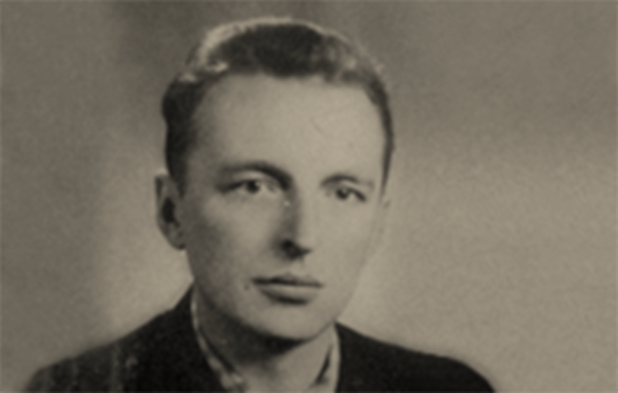
Stanisław Ptak
1921 – 1994

Black and white portrait photograph of twenty-five-year-old Stanislaw. The photo shows his bust. The man has short, slicked-back hair and full lips. He is dressed in a checkered shirt and dark jacket.
Stanisław Ptak (born 2 June 1921 in Kraków, died 6 November 1994 in Kraków), son of Maria (family name Chmiel) and Stanisław. Soldier of the Home Army (AK), pseudonym Agar. After WWII members of the League for Fighting Bolshevism. Pseudonym Kruk. He was persecuted by the communist regime and sentenced to death. After waiting 43 days for the execution the death sentence was turned into 15 years imprisonment. He was released after 10 years.
Stanisław Ptak was a student at Nowodworskiego lyceum in Kraków (he took his school leaving exam matura in 1939). He wanted to study architecture but WWII ruined his plans.
Ptak was an active member of the underground resistance movement. In 1943 he joined the Żelbet group of the Home Army (AK) and assumed the pseudonym Agar. He executed those found guilty of collaboration with the Nazis and also killed Gestapo officers. In 1944 he fought in the Murawa section of his partisan squad as a member of the Władysław Fajkowski (pseudonym Śmiały) group.
After the Home Army was disbanded, Ptak became involved in the activities of the underground independence movement and was chosen as commander of the League for Fighting Bolshevism (pseudonym Kruk).
In the meantime, he continued his education and in 1945 began studying law at Jagiellonian University. A year later, on 20 November 1946, he was arrested along with other students of Kraków universities. After 3 months, on 3 February 1947, he was sentenced to death by the Military Court of Justice (WSR). He was deprived of public rights and his property was confiscated.
In recollection, Ptak wrote: You must be tough(…). We were soldiers, people from the woods and the underground, we were familiar with death. Dying in a battle, in a field, or forest, however, is quite different from waiting for death in a cell and saying goodbye to life every day. Thoughts of death were omnipresent, they were in the eyes, the frozen looks, the voices stumbling over words, the shaking hands, and on the foreheads suddenly breaking out in a sweat in a cold cell.”¹
The execution, however, was not carried out and Ptak was given an amnesty on 22 February 1947. On 17 March 1947, his death sentence was turned to 15 years in prison. He served time in prisons in Rawicz and Wronki and was tortured. He spent two years in a 3-by-3 foot cell with a toilet and concrete floor, dressed only in underwear sleeping on a plank bed without the comfort of a mere blanket or mattress.
Following a political thaw, Ptak was released from prison after 10 years on 14 December 1956.
He was married to Helena Kobiela and had two daughters, Anna and Małgorzata. After his release, Ptak worked as a night carer at Garbarnia Kraków and as a warehouseman at Lenin Steel Mill. Later he became a clerk in Krakowska Fabryka Kabli.
He returned to underground work when martial law was introduced in Poland. (1981 – 1983) and printed an illegal paper called Wronie Zwierciadło, where his poems and drawings were published.
On 22 February 1994, Stanisław Ptak was politically rehabilitated. He died several months later and was buried at Prądnik Czerwony Cemetery in Kraków.
¹Suchorowska D.: Wielka edukacja. Wspomnienia więźniów politycznych PRL. Warszawa 1990, s. 74
Gallery
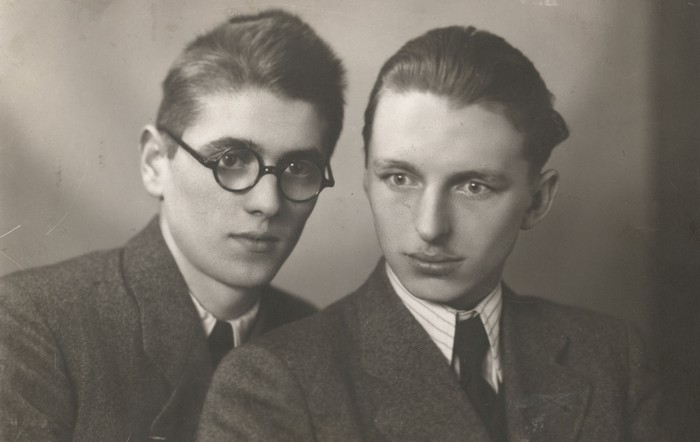
Stanisław Ptak and Zygmunt Marciński before 1939.

Black and white portrait photograph of Stanislaw Ptak with Zygmunt Marcinski. The young men are photographed from the chest up. Zygmunt has short dark hair and round black framed glasses. Stanislaw has his hair greased back, rounded eyebrows and a light stubble under his nose. The boys are dressed in dark suits, white shirts and ties.
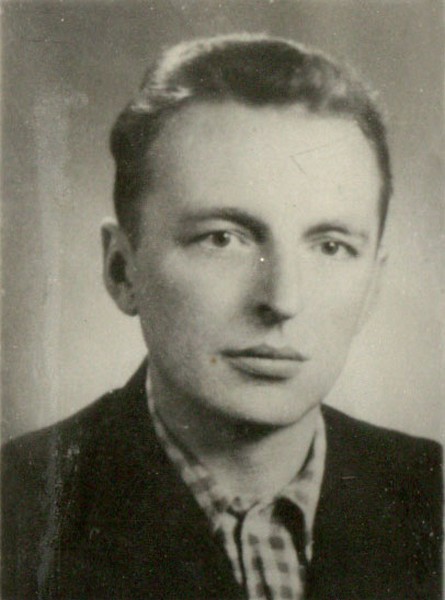
Stanisław Ptak c. 1945. Property of IPN in Kraków.

Black and white portrait photograph of twenty-five-year-old Stanislaw. The photo shows his bust. The man has short, slicked-back hair and full lips. He is dressed in a checkered shirt and dark jacket.
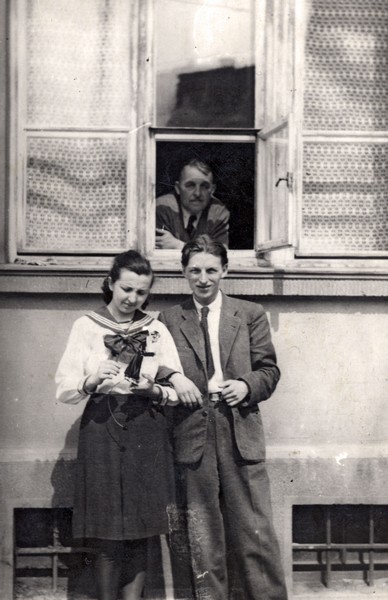
Stanisław Ptak with his sister Aleksandra and his father Stanisław. Kraków 1946.

Photo of Stanislaw Ptak with his sister Alexandra and father Stanislaw. The siblings are standing against the wall of the building, a large window starts at the height of their heads, with their father Stanislaw leaning out of the window. The man is about forty years old, with short hair and a dark suit. The woman is in her mid-twenties, her dark hair i spinned up and pulled back and she is dressed in a uniform with a black knee-length skirt. Stanislav stands next to her and is holding her hand. He is wearing a dark suit, white shirt and black tie.
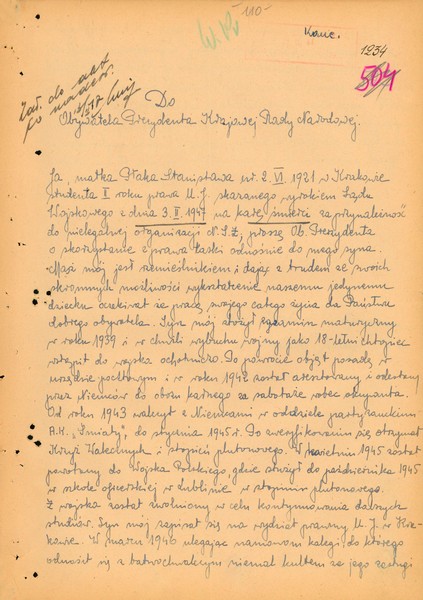
Pardon request written by Stanisław’s mother, Maria. Kraków 1947. Property of IPN in Kraków.

A letter requesting Stanislaw Ptak's pardon was written by his mother, Maria, in 1947 in Krakow.
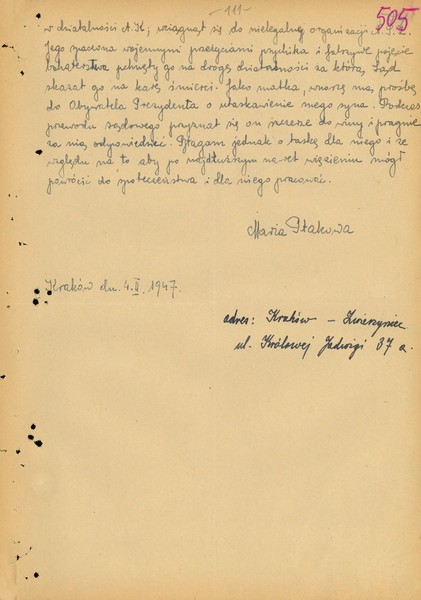
Pardon request written by Stanisław’s mother, Maria. Kraków 1947. Property of IPN in Kraków.

Continuation of letter requesting clemency, signed by Maria Ptakowa.
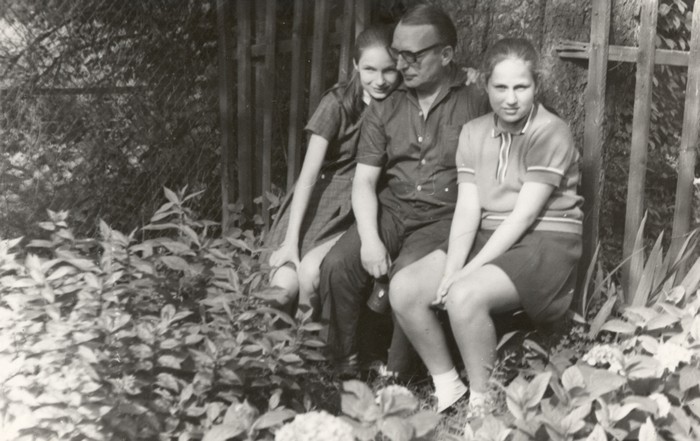
Stanisław Ptak with his daughters in the 1970s.

Black and white photo of Stanislaw with his two daughters. The family pose ssitting on a bench in the garden. Around them are tall plants, a fence and trees. The man is about fifty years old, dressed in a dark short-sleeved shirt and straight pants. On either side of him sits his teenage daughters. Both have their hair tied up in a ponytail. The girl on his left is wearing a short-sleeved dress and resting her chin on her father's shoulder. The girl on the right is wearing a light-colored T-shirt and a dark skirt.

Stanisław Ptak with former partisans celebrating being awarded Krzyż AK. From the left: Krystyna Kapłańska, Stanisław Ptak, Maria Ptak, Władysław Pawelczyk (pseudonym Pirat). Kraków 1973

Black and white photo of former partisans at a ceremony to receive the AK Cross. They are in a room at a small roundtable, talking. On the wall hangs a banner - "Treasury decoration of the Home Army," decorated on the right with a large drawing of the Order of Poland Fighting. There is a group of four men and two women. The men are dressed in dark suits and one of the women, Krystyna Kaplanska, is wearing a uniform. The other woman is dressed in a jacket.
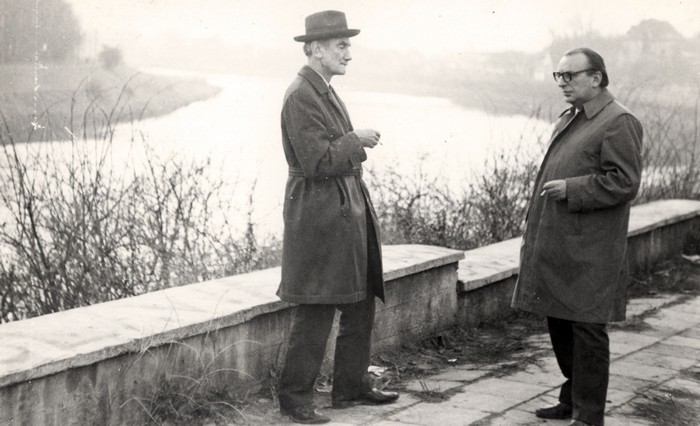
Stanisław Ptak with a friend in the 1970s.

Black and white photo of Stanislaw Ptak with a friend. They are standing by a low concrete wall, with the river-Visla behind them. The men are about fifty years old, dressed in long coats, holding cigarettes in their hands.
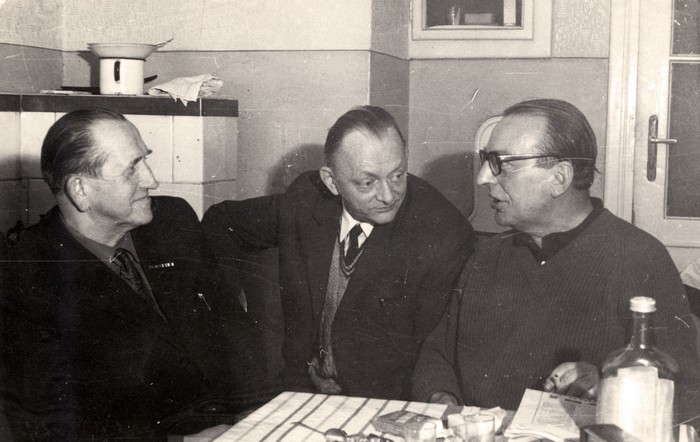
Stanisław Ptak with friends (pseudonyms Gacek and Śmiały (Władysław Fajkowski)) in the 1970s.

Black and white portrait photo of Stanislaw together with two of his friends, Gacek and Wladyslaw Fajkowski alias Smile. They are in the kitchen, with a window behind them and a high countertop with a stove on which stands a bright saucepan. The men are about fifty years old, dressed in dark jackets. Stanislaw is facing his colleagues sideways, wearing glasses and a sweater with a shirt underneath. They sit at a table and talk.
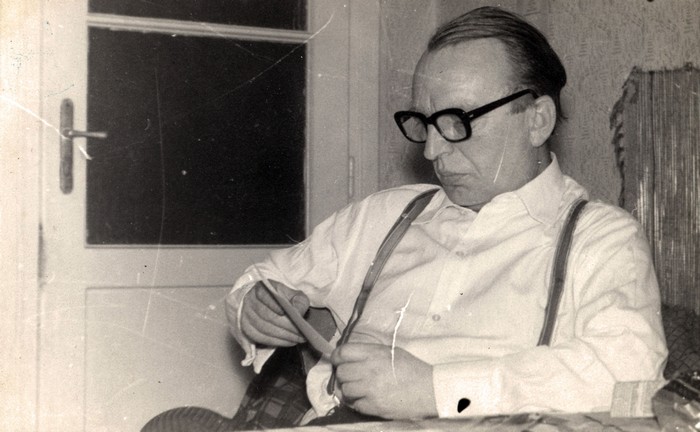
Stanisław Ptak in the 1970s.

A black and white photo of Stanislaw, about fifty years old in a room sitting in an armchair and lookingat a piece of paper he is holding in his hands. A white door is visible behind him. The man is wearing rectangular glasses with thick frames and is dressed in a white shirt and pants with braces.
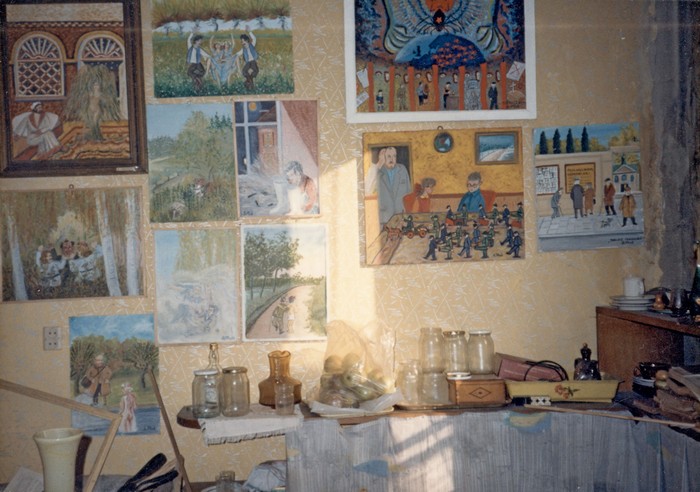
Stanisław’s paintings in his house. 1980s.

Color photo of the wall in Agarówka - Stanislaw's apartment, where his paintings hang. There are eleven works which are small and colorful. Beneath them on a narrow shelf lie painting supplies and a few empty jars.
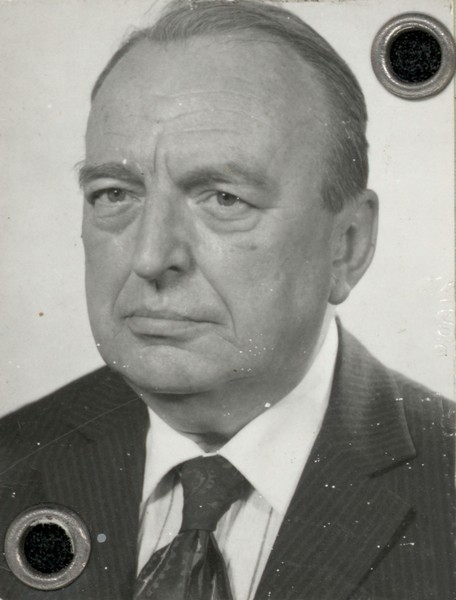
Stanisław Ptak in the 1990s.

Black and white portrait photograph of seventy-year-old Stanislaw Ptak. The man is photographed from the chest up. He has grayish, slicked-back hair. He is dressed in a white shirt, dark tie and a black pin striped suit.

